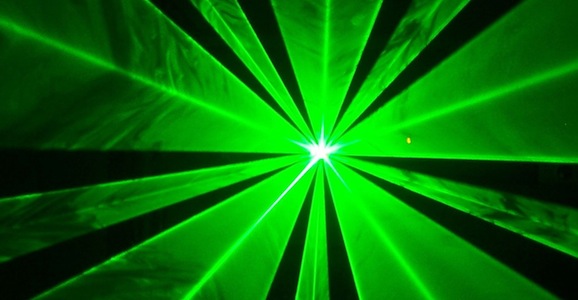Scientists Claim They’ll Create Matter From Light Within A Year
This article is more than 2 years old
 It’s theoretically possible to make solid matter out of pure light. I say theoretical because, though the idea was first posited more than 80 years ago, the feat has never actually been performed in a laboratory setting. That may change soon, however, as researchers now say that they plan to demonstrate a practical application of this theory within a year. Yes, that means that means exactly what you think it means.
It’s theoretically possible to make solid matter out of pure light. I say theoretical because, though the idea was first posited more than 80 years ago, the feat has never actually been performed in a laboratory setting. That may change soon, however, as researchers now say that they plan to demonstrate a practical application of this theory within a year. Yes, that means that means exactly what you think it means.
Though the theory is sound, scientists have, up to now, been unable to produce viable results in a controlled environment. Physicists at London’s Imperial College recently published a paper making the claim that they have figured out how to make matter out of seemingly nothing, and it involves lasers, which makes it that much more futuristic and science fiction sounding.
Steven Rose, a member of the Imperial team, says, “We have shown in principle how you can make matter from light…If you do this experiment, you will be taking light and turning it into matter.”
Sci-fi fans shouldn’t get too excited yet, we’re not talking about the ability to blast some laser beams and create random objects like something out of Star Trek, yet. The matter we’re talking about is of the subatomic variety, and though it will be there, it will be invisible to the human eye without some sort of aid. But every piece of revolutionary technology has to start somewhere, right?
The theory goes like this: in rare occasions, like legitimate bigfoot sighting rare, two photons, particles of light, can combine and produce an electron and positron. “Electrons are particles of matter that form the outer shells of atoms in the everyday objects around us.” Gregory Breit and John Wheeler, two scientists who would later work on developing the atomic bomb, first posited this in 1934. The duo didn’t have high hopes that their premise would ever come to fruition. Their original study states that it is “hopeless to try to observe the pair formation in laboratory experiments.” But given today’s technological advancements, this goal is finally within reach.
According to Oliver Pike, the lead on the Imperial study, “The Breit-Wheeler process is the simplest way matter can be made from light and one of the purest demonstrations of E=mc2.”
The process the team has developed starts off by firing electrons at gold in order to make a beam of “high-energy photons.” Then they fire a laser into a gold capsule called a hohlraum, which will result in light as bright as that of a star. Finally, the scientists will shoot the photons into the hohlraum, and when the two streams crash into one another, matter. So the theory goes. If they’re successful, “The scientists’ calculations show that the setup squeezes enough particles of light with high enough energies into a small enough volume to create around 100,000 electron-positron pairs.”
Andrei Seryi, the director of the John Adams Institute at Oxford, says, “It’s breathtaking to think that things we thought are not connected, can in fact be converted to each other: matter and energy, particles and light. Would we be able in the future to convert energy into time and vice versa?”
The team hopes to put their process to the test within the next 12 months. If they pull it off, this could be a new way to study the ways that subatomic particles behave.












